The Brain Issue
Face your fears: read it pg. 12


Face your fears: read it pg. 12

Carlmont Journalism is a nationally renowned media arts program run by the students of Carlmont High School. Our staff works to deliver the latest news to our student body, their families, and the community. News, within our school and beyond, is important to us, so we are committed to providing timely information, current events, and thought-provoking ideas to our audiences through storytelling, design, video, photography, and other emerging technologies.
Highlander Editor-in-Chief
Chesney Evert
Highlander Managing Editors
Lindsay Augustine & Grace Wu
Scot Scoop Editor-in-Chief
Hudson Fox
Scot Center Editor-in-Chief
Hayes Gaboury
Social Media Editor-in-Chief
Mandy Mah
Justin Raisner
Highlander Editors
Beck Von Tersch
Andrew Shu
Malina Wong
Isa Khalak

Welcome to the third issue of The Highlander! We are delighted that you are joining our staff as they dive into one of the most complex parts of human existence — the mind. So much of popular media revolves around psychological phenomena, from Netflix documentaries to true crime podcasts. This fascination with psychology appears to stem from the desire to understand our own behavior (and that of those around us). If this study can be boiled down into a science, then it’s easier to categorize the things we don’t understand.
Sienna Reinders
Oliver Fichte
Alice Lan
Lucy Sanders
Inaaya Omer Staff
Adelaide Reinshagen
Aidan Lynd
Aimee Teyssier
Alexander Menchtchikov
Andrew Tolu
Annabel Chia
Anoushka Mekerira
Audrey Burnley
Austin Li
Avery Wong
Carolina Cuadros
Catherine Eikelbarner
Charlotte Gordon
Emma Yin
Erik Cheng
Evan Leong
Gabrielle Shore
Glydelle Espano
Gracia Shao-Xue
Inaaya Omer
Isabel Wright
Izaan Masud
Jasneh Sasan
Clementine Cunningham
Karla Lee
Kiana Hinkson
Linda Lin
Lucy Lopshire
Madelyn Mercado
Marrisa Chow
Maya Campbell
Myles Hu
Nyah Simpson
Piper Diehn
Quinn Rolland
Rintaro Sato
Robin Linares
Serenity Corbett-Richardson
Soleil Dam
Sophia Mattioli
Sophia Schreiber
Sophia Sunbury
Sophie Gurdus
Stella Pavao
Sydney Tao
Ujala Chauhan
Urvi Kulkarni
But in our constant quest for explanation, what nuance is lost? Not to mention the fact that this contemporary fascination with psychology is accompanied by self-diagnosis and colloquial use of medical terminology. Even as our awareness about mental health increases, so many are left without access to life-saving services; the National Alliance on Mental Illness states that nearly half of all adults and children in the United States living with mental illness do not receive any form of treatment.
So in a way, our fascination is a double-edged sword: yes, it destigmatizes, but our global community has a long way to go before our awareness motivates widespread action. We hope that a piece in this issue speaks to you. Maybe you will even find your mind changed.
Thoughtfully,
Psychology is in every aspect of our life, so it makes sense that the entertainment industry includes the concept within television shows and movies. Below will include whether these forms of entertainment provide accurate portrayals or if they need significant refinement.
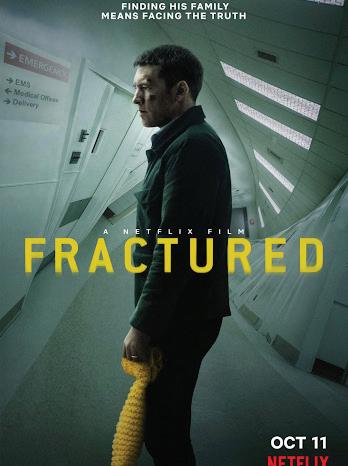
Ray Monroe travels with his wife and daughter when they stop at the gas station. His daughter falls and breaks her arm, leading him to rush her to the hospital. Once they arrive and settle in, Monroe waits for an update on his daughter when the hospital staff reports that no child fitting his daughter’s description came to the hospital.
Monroe then goes on a long journey to figure out what happened to his family and where they went. He suffers from a split in his reality due to experiencing a psychotic outbreak, making him hallucinate conversations with his family, even though he is entirely alone.
According to psychologist Cristina Blanco, a psychotic disorder can create a parallel reality for individuals. It distorts the truth and the scope of the world to cope with the harsh realism reflected in life. This disorder is relatively accurate within the film, as a psychotic break display is clear. However, the film provides a faulty background to the disorder as a break in one’s psyche occurs from anything one perceives as traumatic, not just a violent event.

Based on the life of mathematician John Forbes Nash, this movie follows Nash’s development of schizophrenia and how it can impact one’s life. The film depicts many signs of the disorder, providing a more accurate depiction of how schizophrenia can manifest within individuals.
Maria Gaglio, in her analysis paper Accuracies and Inaccuracies: Analysis of the portrayal of Schizophrenia in the major motion picture A Beautiful Mind, discusses how the symptoms of schizophrenia are correct in their account, but the recovery period and depiction are entirely inaccurate. A Beautiful Mind may bring forward a greater emphasis on the toll that schizophrenia can have on those diagnosed with the disorder, but the dramatization of electroshock therapy and the actions of those who possess the disorder hinder the validity of the film.
This criminology show is a part of the crime drama era’s height during the 2000s but has a different lens. The psychological aspects of detective work are the focus rather than solely the lawful processes. The show hones in on varying serial killers in each episode with a team of detectives called the Behavioral Analysis Unit (BAU). They fly to multiple locations to investigate crime scenes and compose a profile on the killer to prevent future fatal attacks from happening.
From mental disorders like Schizophrenia and Bipolar disorder to the study of forensic psychology, Criminal Minds aims to expose audiences to what can cause individuals to commit heinous crimes. Although the show’s intent is there, John Delatorre, who has a psychology degree and vast experience and training in forensic psychology, states how the scenarios include fabricated qualities within the show. They convey the idea that profilers are the only job position within the BAU and can predict the thoughts of serial killers most of the time, which is misleading, according to Delatorre.


Lie detector Dr. Lightman helps solve criminal cases by studying the facial expressions of suspects and inspecting every gesture. Micro-expressions, emotional displays that appear for only a brief moment, can leak what a person feels, which Dr. Lightman uses in this series to determine if suspects are telling the truth or lying. Association for Psychological Science (APS) states how the basis of the character is from Paul Ekman, who found some universal expressions people make, like those of happiness, anger, sadness, and fear.
The show includes correct psychological concepts but often does not follow through in its application. An emphasis on baselining, the study of a person to determine how they naturally act, is displayed in the show but soon becomes less of a focus. Despite its integral role in the lie detection process, this determining factor is seemingly abandoned and causes the show to lose its accurate reflection of lie detectors in real life.
An A&E reality show depicts people with anxiety disorders like obsessivecompulsive disorder (OCD) and panic disorder and how it impairs their daily lives. The patients film themselves to show their behaviors within their disorders and then undergo intense therapy for weeks to try to correct these behaviors.

Many watch television shows like Obsessed to see the struggles of others instead of trying to understand the disorder. It provides a more realistic grasp of how mental health can affect individuals, according to the American Psychological Association (APA).
Documentary-style reality shows are the best indicators of realistic psychological ideas within the entertainment industry. Their focus is on real people instead of characters in storylines, and they display how tackling a mental disorder is not a quick and easy fix.
All images are promotional material for their respective shows and movies
Six hours of sleep. Freshman Olivier Ansel pulls himself out of bed and into the shower. Then he sits down to a steaming mug of coffee that his mother has made for him.
Five hours of sleep. Junior Polina Skurikhina is late for school. She rushes through the kitchen, spying her younger sister with a mug of coffee. Her mother is groggily dumping half-and-half into her coffee, but Skurikhina doesn’t reach for any caffeinated items. Caffeine has no effect on her, so she jams on her headphones, the pulsating music jolting her brain awake.
According to Medical News
Today, 83.2% of teenagers drink caffeinated beverages regularly, and according to the National Library of Medicine, 92% of students do so too. The reasons for doing so are mainly to stay alert and to feel awake, but for some, it is because they simply love the taste of caffeinated items such as coffee.

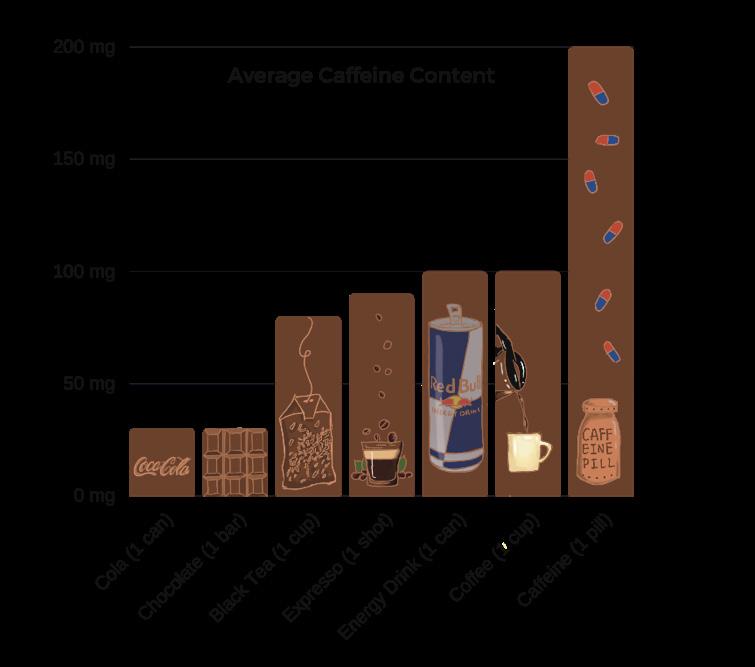
Starbucks barista, junior Kevin de Souza, has noticed the mood change after customers have received their caffeinated drink.
“Kids tend to get a lot more energy. Their mood is also lifted to a much higher extent. Sometimes they get a lot louder. Sometimes a lot more obnoxious. But most definitely get a kick of energy in some way from what
I’ve seen while working,” de Souza said.
People feel tired or sleepy because brain cells in the human body—also known as neurons— use and break down a molecule called adenosine triphosphate for energy. Adenosine triphosphate is essentially the “currency” of energy that our body uses. As the brain uses energy, adenosine triphosphate levels will increase inside the neurons, and diffusion— in which molecules tend to move from areas of high concentration to low areas—causes the adenosine triphosphate to leave the neuron cells and attach to adenosine receptors outside of the cells, which signals for sleepiness.
Caffeine makes people feel more energized because it inhibits adenosine receptors in the brain, blocking the adenosine triphosphate that has diffused out of the brain from attaching to the adenosine receptor which prevents sleepiness. However, how quickly your body breaks down the caffeine in your adenosine receptors depends on genetics and also age, gender, weight,
pregnancy, lifestyle, and more.
For some students, caffeine and coffeerelated drinks do not affect them at all, such as Skurikhina.
“Although my family likes coffee because it helps them wake up, it just doesn’t work on me. Black tea doesn’t work on me either; energy drinks don’t work on me. I have no idea why but I just liked the taste, so that’s why I drink (coffee),” Skurikhina said.
Like Skurikhina, many began their journey and habits with caffeine due to their liking of the taste of coffee.
When Ansel was young, he was introduced to coffee by his parents, who would let him grind up French Roast coffee and occasionally allow him to consume some.
“After I had coffee, I was very energetic, and I got through my online school through coffee. There was also this energy drink that tastes like milk and sugar, and it was like 250 grams of sugar and 150 milligrams of caffeine. I had at least two of those a day,” Ansel said.
Experts recommend that adolescents consume no more than 100 milligrams of caffeine a day, which is approximately one cup of coffee or two caffeinated sodas. The effects of caffeine include temporary energy boosts, and an improvement in mood, but also detrimental health effects such as nervousness, irritability, nausea, cardiovascular

symptoms, and sleep impairment.
“I learned about the dangers of having too much caffeine from my experience and Carlmont’s life skills class taught by Eric G. Perkins. Once, he was lecturing about how coffee ruined people’s lives, and I learned from that and agreed with what he said,” Ansel said.

There are ways to stay alert without caffeine, and those methods include exercising, hydration, power napping, and more.
“I have a 14-year-old sister, and she drinks caffeine. She drinks coffee, and for her, it seems to work, but caffeine is addictive. Just knowing that people can get addicted is kind of bad. So personally, I wouldn’t recommend it. But whatever floats your boat, you can do,” Skrukina said.







Have you ever been seated right next to your crush? Been assigned to the same group project? Seen your teachers whispering in the halls? You’re not the only one. So, The Highlander has set out to find just how in tune teachers are to these classroom dynamics.
First up, we have Andrew Ramroth. He’s been teaching math for 16 years, a Carlmont fan favorite. He himself is the product of a success story, having sat next to his wife in their high school English classes. They’re approaching their 16th wedding anniversary, with two kids to boot. You’ll find him woodworking, running a soccer camp, and playing with his kids in his spare time. Every year, the couple takes turns planning the Big Date for Valentine’s, though the tradition has taken a backseat since babies one and two.
Molly McNinch is our second panelist. She’s been at Carlmont for six years, and teaching for nine total. When she’s not teaching derivatives, you can find her beside the pool gossiping with the water polo girls. Her favorite Valentine’s tradition is Galentine’s Day, Leslie Knope style. But come actual Valentine’s Day, she’s with her husband. The pair celebrated their fourth wedding anniversary in October.
Q: Do you have opinions on these, think it’s funny/cute/ amusing?
Ramroth : I think it’s cute. There was a time when I was dating in high school, and that was really fun.
Q: Does this affect seating charts? Group projects?
Ramroth : When I put my seating charts together, I think about pairs, and I think about whether there is energy there for conversations. I want to find pairs that are going to have a lot of energy or one person might be able to help the other person out.
McNinch: Recently, to see if compatibility shows up, I do one seating chart by astrological sign per year. It could be more; it could be less. So I started this two years ago, and that’s always fun because I kind of get to learn a little bit more about the personalities of the students. If two kids look like they might be a good match, then they enter the Three Phase Seating Chart Process. The first time they don’t start directly next to each other — that’s a rookie move — so you have to offset them and have a row between them. Because if the person’s interested, they’re gonna lean over the row and try to talk. Once that happens, I keep them offset, but now they’re next to each other in the row. So now the person can turn around and talk to the person. The third step is you sit them together in the back. That way, they can, if they do like each other, have side conversations.
Q: Any success stories?
Ramroth : I’ve had some kids who dated throughout much of high school. I will say, though, that I can’t think of any relationships that lasted beyond. Oftentimes when I’ll check in with students and say, “Hey, are you still with so and so?” I want to say almost 100% of the time, the answer’s no.
Q: Do you notice kids’ crushes? Pay attention to who’s dating?
Ramroth : You can kind of sense it. You can see the looks kids give each other and who asks to sit next to who when they’re studying, and you get a rough idea of what’s going on. And so I’m happy for kids when they get any sort of relationship in high school — good friends or romantic partners, whatever that is.
McNinch: It was my second year teaching when I was at Woodside, and the science teacher told me, “Hey, I think that they’d be a good match and homecoming is coming up. I really want him to ask her to go.” They had class together with her, and they also had class together with me. So we made a seating chart arrangement with them together in science class and geometry class. I don’t believe they ended up going to the dance together. But she was the one who basically started my journey.
McNinch: Two students met in my geometry class, both freshmen, and I remember I had them both as seniors during distance learning. It was so funny because I actually saw them here after distance learning. They were camp counselors at school, and I was at the pool for Junior Olympics. They’ve been to college together. They’re still dating. They’re still going strong, so that might be my first marriage. We’ll see. Fingers crossed.
Q: Do you gossip with other teachers?
McNinch: When I’m with the boys’ water polo coach, we talk all about the kids, and we’re just like, “Oh, well, we think this one likes this one.” Or “Oh, she told me that she was dating him. He’s dating her.” We get a lot of information from the kids.
Q: How did the high school romance fare for you?



Ramroth :We sat next to each other in a couple of our English classes early on in high school, but it was when we were both kind of panicking for a date to the homecoming dance. So we just ended up going with each other, and that was kind of the beginning of it all.

“You can kind of sense it. You can see the looks kids give each other and who asks to sit next to who when they’re studying”
- Andrew Ramroth







Carolina Cuadros
Carlmont’s college counselor, Nina Rasor, shares her favorite ways to calm down during the busy winter season.
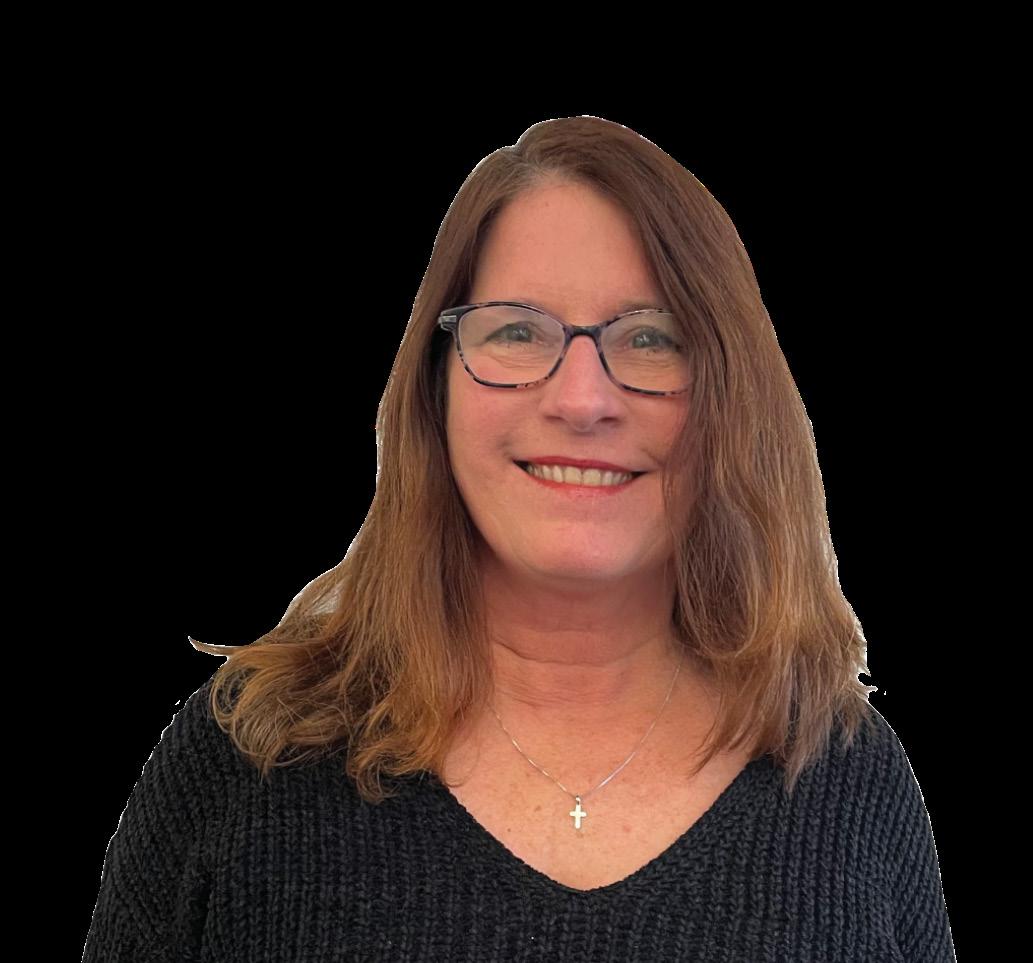

Comfortfood

Comfort tunes


Rasor loves to fill her plate with chocolates and anything salty. She spends her time listening to piano melodies to help her slow down.
Comfort activity
her snuggling on her couch.
Rasor winds down by watching her favorite romcom, “50 First Dates.”

Art by Malina Wong


Sleep is an essential part of teenagers’ lives, but according to the American Academy of Sleep Medicine (AASM) around 70% of them don’t get enough of it. The AAMS says that teenagers are supposed to get anywhere from eight to ten hours of sleep a night.
Ainsley Colt, a Carlmont student who has a busy schedule, reflects on her usual sleep schedule.


“I’ve never really had a set bedtime. I always just put myself to bed at like 8 p.m. because I like to be asleep early. As long as it’s dark out, I can go to sleep.




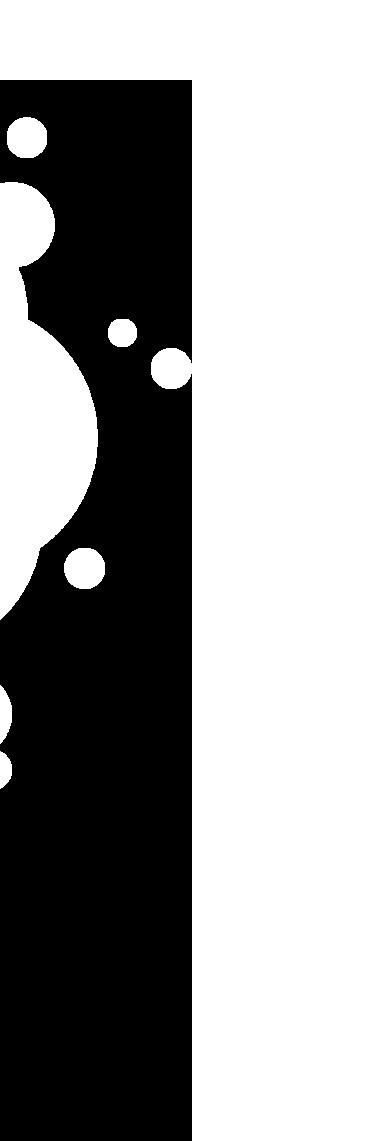
In an ideal world, I go to bed at like 9 p.m. and get up at like 5:30 a.m., but that’s not usually how it works. So sometimes I’ll go to bed around midnight or 2 a.m. and then get up around 5 a.m. Because the stress of school makes me not sleep, every Sunday night, I never get more than three hours of sleep.”
is a junior at Carlmont, who takes multiple advanced classes and does school sports.

“My sleep schedule is really random. Some nights I go to sleep at 4 a.m. and others at 3 a.m., but usually, I don’t get that much sleep. Normally during the week, I get around three or four hours, and then I sleep a lot on the weekends, I would say usually around 10 hours.
Normally, I’m really tired when I come to school, and it’s hard for me to perform well and then as soon as I get home from school, I also have homework to do. So it’s just like non-stop work. Sports make me go to bed later along with a lot of hours of homework. I trained for around two hours each day and then homework also takes up a lot of time. But, during summer breaks, my sleep schedule completely changes and I get around eight hours.”
Emily Song, a sophomore at Carlmont who is a part of multiple school sports, recalls what her sleep looks like during a normal school week.
“Normally I go to sleep pretty late like 12 a.m. and I wake up around 7 a.m., which is around seven hours asleep on weekdays. I have practice, and it runs pretty late, so I don’t have a lot of time to do homework when I get home. Drinking caffeinated drinks helps me wake up in the morning.”

 written
written
One year ago, Jordan Hall* was “the person who couldn't even step foot outside of the house.” They did not leave their house for two months, aside from going to therapy.
Hall had heard about agoraphobia before, but it wasn’t until their first-hand experience that Hall realized the gravity of the condition.
“There’s a character in my favorite show that deals with agoraphobia. When I watched it before I experienced agoraphobia, I was like, ‘This is so exaggerated; she can’t even go outside her own house.’ Now, looking back, that’s not even an exaggeration…no, it’s very much realistic,” Hall said.
*In accordance with Carlmont Media’s anonymous sourcing policy, Hall’s name has been changed due to safety concerns about their phobia being connected with their identity.
The National Insitute of Mental Health defines agoraphobia as “an anxiety disorder that involves intense fear and anxiety of any place or situation where escape might be difficult.”
For most, being in unpleasant social and physical situations is simply, well, unpleasant.
Kathryn Burton, a teacher at Carlmont High School, has never been a fan of large gatherings of any kind.
“I went to the Castro Halloween celebration once or twice, and it's that kind of crowd that I really don't like, especially if there's drinking or if there's potential for crazy behavior or violence. That makes me very, very nervous,” Burton said.
While Burton does hold concerns about potential dangers that come from crowded situations, these worries do not impact her life beyond causing occasional discomfort, as she tends to avoid these unfavorable circumstances to begin with.
Phobias are a different story. In “Phobias: The Psychology of Irrational Fear,” Irena Milosevic and Randi E. McCabe refer to the cognitive model, which suggests that “individuals develop panic disorder when they interpret their bodily sensations as being dangerous.”
For Hall, this fear is debilitating.
According to “Phobias: The Psychology of Irrational Fear," agoraphobia tends to develop in individuals during late adolescence or early adulthood, with more women diagnosed than men. In addition, the phobia is often linked to other mental disorders, which include panic and anxiety disorders.
Hall cites the COVID-19 pandemic as a major catalyst for their development of agoraphobia. Having lived with social anxiety disorder** and obsessivecompulsive disorder*** for a portion of their life, Hall was aware of the link between agoraphobia and other disorders. Yet, no amount of cognizance prepared them to live with agoraphobia.
“Agoraphobia was my brain’s way of setting up a block, being like, ‘This is too much to handle all at once coming out of this pandemic.’ I left school for the first time. I wanted to go to school, because my social life was lacking from just being stuck at home all day, but it was just too much for me,” Hall said.
“At first, I was so, so afraid. It was such a deep, irrational phobia for me that I couldn’t even think about it. I just avoided everything and didn’t put myself in the exposure therapy context until pretty late on.” Hall said.

An estimated 19.3% of U.S. adolescents aged 13-18 have a specific phobia, with an estimated 0.6% having a severe impairment due to a phobia, according to the National Institute of Mental Health.
Milosevic and McCabe additionally explain in their book that nearly all
psychological treatments for agoraphobia also focus on the treatment of panic disorder. Cognitive behavioral therapy (CBT) is often considered the first line of treatment; CBT involves both efforts to change thinking patterns and behavioral patterns, according to the American Psychological Association. One specific cited strategy recommends “facing one’s fears instead of avoiding them.”

Beginning exposure therapy was an uphill climb for Hall.
“I told my mom, ‘I want to start doing things, I want to start doing what I want.’ Once I got that motivation to begin exposure therapy, it was actually doing it that made it so much harder,” Hall said.
Every minute outside the safety of home was a battle.
“Just going in the car to go on a 10-minute trip to Target was insanely hard. We've had to turn the car around many times and it's every single time it's this stab, a stab in the chest that makes me really gloomy and rains on my parade,” Hall said.
Hall had to give up activities they loved, such as theatre, but they’re optimistic about the future as they continue their journey with exposure therapy.
“I’ve been trying to find, again, the enjoyment of those activities, in my own way,” Hall said.
Because agoraphobia impedes Hall’s ability to perform, they have taken on other ventures, such as working backstage on hair and makeup, to continue taking part in activities they love.
Hall said, “I’m just trying to do what I can, at this moment right now, to feel connected to my interests and the joy that comes from them.”
The more time Hall spends doing exposure therapy, the more comfortable they feel doing things and going places.
“Now, I'll just go help my mom run errands in places where I've been before that are now safe to me, and I go there no problem. Every weekend, I try to challenge myself and go somewhere new or somewhere for a longer amount of time,” Hall said.
Hall’s progression is far from linear, however. If Hall wants to go outside and eat, it takes immense planning and security on their end.
“I still very much have to be in control, in my mind, of what’s going to happen. I’ve kind of trained myself to let go of it and understand that I don’t know how things are going to go, and that’s okay,” Hall said.
Hall ensures that they are always with someone that is considered “safe” to them, whether it’d be one of their parents or a close friend.
“That support from other people is something that I really do need, just knowing they're there and there's like comfort there,” Hall said. "That's definitely been one of the most helpful things.”
Looking at the past is a mixed bag. Looking to the future, however, Hall remains optimistic.
“There are two sides to the coin, where I look back and I think about all the things I was able to do without the instant panic or fear. It’s like, ‘Gosh, I really wish I could go back to that,’ and I feel sad, but I also get this mixed feeling; I was able to live like that once, what’s stopping me? I can learn to live like that again,” Hall said.
Just going in the car to go on a 10-minute trip to Target was insanely hard. We've had to turn the car around many times and it's every single time it's this stab, a stab in the chest that makes me really gloomy and rains on my parade.
Jordan Hall*

**An intense fear of being watched and judged by others
***A disorder which features a pattern of unwanted thoughts and fears and/or repetitive behaviors
CLAUSTROPHOBIA
An extreme or irratioal fear of enclosed spaces.
ACROPHOBIA
An extreme or irrational fear of heights.

An extreme or irrational fear of arachnids—spiders, ticks, scorpions, etc.

1 3

An extreme or irrational fear of blood.
Fear is the universal condition in which Jordan Hall*'s agoraphobia is rooted in. Unaddressed, fear creates a gravitation to false perceptions of the world that are both consistent with the fear and with irrational ideas.

“I know that my agoraphobia is an irrational fear. It doesn't change the fact that there is this chemical panic response that goes on in my brain,” Hall said. Their irrational fear—not having control over their environment—is the root to agoraphobia, and why Hall now uses certain methods to be less susceptible to destructive spiraling from not knowing.
“I still very much have to be in control in my mind of what's going to happen. But I've kind of trained myself to let it go a bit and be like, 'I don't know how things are gonna go. And that that's okay,'” Hall said.
It took Hall an array of therapeutic services to reach their current state of acceptance with not having control. However, when a phobia goes untreated, it can disrupt in one's ability to rationally perceive the world around them.
in the village and eventually escalated into more widespread accusations, trials, and 25 additional deaths.
A journal entry about the environment of the witch trials published by the American Economic Association, introduces the contributing factors to a culture conducive to that mass hysteria. It found that falling temperatures overlapped with spikes in the frequency of witchcraft trials, while rising temperatures paralleled plateaus.
The article attributes the lack of trust which induced the witch hunt to food and supply shortages from the cold weather and the uncertainty brought to the Bostonian Puritan community during the “little ice age.”
Although these environmental fears created genuine insecurity, the feeling of environmental threat can be just as powerful in inciting communal fear.
“That's probably true that when there's a sort of stress or crisis that people turn more readily to who they can blame for things. Although, you can almost always convince yourself that there's a crisis,” Rosenfeld said.
19.3% of American adolescents aged 13-18 have a specific phobia.

(National Institute of Mental Health)
“Irrational fear of others actually spreads like wildfire among both closed populations, like a high school student body, and in the public in general. False information can very quickly get us into a situation where everybody is afraid of a group because fear of others is the kind of irrational fear that spreads readily in populations,” said Stanford sociology professor Micheal Rosenfeld.
In 1692, this phenomenon manifested in a community’s fear of demonic possession in women and subsequent grave consequences.
According to a History article, a group of young girls in the village of Salem, Massachusetts claimed that the devil possessed them supernaturally and that other women of the settlement were witches.
Over the next few months, this incident incited over a hundred witch accusations
This phenomenon proved to be true, as some 300 years after the first American witch trials, a similar story spread throughout the U.S. in fear of demonic interaction from cultural changes: the Satanic Panic.
The 1980s saw extensive media coverage of people who believed that Satanists were murdering, assaulting, and brainwashing children.
This movement arose out a conservative take on the demand for daycare from more working women and the fear many parents had of their child being sexually assaulted.
In 1984, media coverage of a Michigan university sophomore by the Washington Post linked his suicide to his playing of Dungeons & Dragons (DnD), both of which were attributed to satanism
According to music history expert John Brackett in his University of Illinois Press journal, the panic grew into societal fear of DnD, certain demonic shapes, daycare, and rock-and-roll music with subliminal
messages because of the way a word sounded backwards in the Led Zeppelin song Stairway to Heaven.
This bout of hysteria resulted in three teenagers being wrongly convicted of homicide in 1994, as covered by a New York Times article that associated the teenagers’ “gothic” appearance with satanism and ritualized murder of children.
In the same way that witch hunters had consumed news of girls admitting to demonic possession, overly-concerned suburban parents had seen vast television coverage of satanism as a potential threat to their child’s safety.
“Social change, or the perception of social change definitely can lead to fear. For instance, increasing roles for women or the LGBTQ+ community in society, that's a social change. So there's a tendency for people who see the society changing around them to be afraid and angry about

their discomfort with the change which manifests blaming someone,” Rosenfeld said.
In current times, social media often accelerates stories that conveniently place blame on others as found in a statistical analysis of tweets on Jstor: “The spread of true and false news online.” The study found that retweeting, social interaction, and other human behaviors make “the truth take about six times as long as falsehood to reach 1500 people and 20 times as long as falsehood to reach 10 Twitter interactions.”
Historically, times of environmental uncertainty have promoted prime conditions for mass irrational fear. Social media did the same in the thick of the global COVID-19 pandemic that contributed to the irrational foundations to Hall’s agoraphobia.
Although media acceleration of statements benefits falsehoods more than
truths, it still has benefits for personal action as when true stories spread it can inform positive change as represented by rational fear of COVID-19 that kept people inside.
“Fear of going out kept people inside. It was not unreasonable to have a fear of going out during the pandemic because going out was more dangerous than being with your immediate household,” Rosenfeld said.
Even though there are grave consequences to the phobias that come from misinformation, truthful information can also utilize common fears and the subsequent anxiety from them to spread safe personal behaviors.
Protests can easily escalate into mass hysteria. Mob mentalities are often exacerbated by law enforcement.






Everywhere you go, you can see logos: in the grocery store aisle, opening an internet browser, or even on someone’s shoes. Many of these logos are instantly recognizable, like McDonald’s golden arches. Still, like most things, logos change with the times, which can have a variety of reactions from consumers.

Before looking at the changes, one must look back at what makes a good logo effective.
According to Hocheol Yang, an Assistant Professor at California Polytechnic State University San Luis Obispo for graphic communications, brands use logos to help put their best foot, or rather, face, forward.
“One way to consider it is thinking of those logos as their brand’s face. Not just a face of a robot or their material, but as a human’s face because people have a tendency to associate those (brands) to human life behavior,” Yang said. “So I think it is helpful when they think of those logo designs as part of a living entity as part of their business.”
According to a 2002 report, “Creating effective logos: Insights from Theory and Practice,” logos are essential for brand recognition. Visual cues stimulate recognition faster than verbal cues like slogans, especially when such visual cues have been a staple for the entirety of the brand’s history, like Nike’s swoosh logo.
In that vein, nostalgia can play a significant role in the popularity and recognition of certain brand logos. Older versions often stand out when compared to newer versions for a few reasons.

“I feel like, in general, (older logos are) more detailed. And I liked that about them,” said Jessie Rizvi, a junior. “I guess I have a bias


to like the old ones because it’s nostalgic and what’s familiar to me.”
Before recent redesigns, older logos often had a more detailed look and took advantage of shading for a more 3D effect.

“3D logos boomed and were more favorable like 10 years ago. They were designed in a time when it was more natural to see those 3D designs,” Yang said. “So at the time, designers tried to make them more realistic, and they made all the designs and graphics, including logos and more, stand out more around the time.”
Some enjoyed these aspects of design since they enjoyed that attention was paid to the details of the logo.
“People put more effort into it rather than a silly little drawing,” said Lotus Tang, a senior. “I guess they were more thought out, (and more) shiny.”
Additionally, as Rizvi explained, older, more 3D designs seemed more inviting than their modern counterparts.
“There's the lack of nostalgia and familiarity, whereas the (older) one is kind of a comfort. It's my comfort icon,” Rizvi said.
Ultimately, for long standing brand notoriety, particularly for brands who don’t necessarily care about updating their branding for the latest trends, the newest design trends may not be enough to make such a drastic change.
“Ford Mustang has (had a) long heritage, a people will remember that with that name. So, products that have those types of heritage may want to appeal to people who have those old memories, and they want to keep their heritage in their design,” Yang said.
These older logos can provide a sense of comfort for consumers, they have downsides. Playing too much into nostalgia can hinder the company's branding strategy, especially when a brand does not appeal to a nostalgic audience.
“If the business is newer and follows trends in its identity, nostalgia might not be the best way to create its look. For example, Netflix might not want to be a nostalgic brand because they want to be more current,” Yang said.
For some brands, it might make sense to move away from outdated design trends in favor of a more simplistic design. Additionally, 3D design may have too many challenges to make it a style worth keeping.
“3D design entails a lot of shading and gradations in color and brightness, and in severe production, that’s challenging and can be quite costly,” Yang said. “So if the designers can design a good-looking logo in 2D, that can be a better option than 3D.”

Still, these design changes can have significant pushback, especially from consumers. According to the report “Creating effective logos: Insights from Theory and Practice,” graphic designers often overlook consumer responses to logo changes. Consumers tend to be “subjective and have strong preferences for familiar subjects,” while the designers may be “more objective in their evaluations.”
Some of these design changes, especially toward logos with more extreme changes, can provide a negative emotional response, like Rizvi’s response to the new Pringles logo.


“I’m not going to go as far as to say I’m disgusted by it, but what is that? The nostalgia is gone, and it’s kind of just bland,” Rizvi said.
The overall trend toward simplistic design to an outsider may seem like a confusing change, but there is reasoning behind the switch in design trends.
“Once people were accustomed to screens
and used the iPhone every day, design trends moved to more material design in a flat screen,” Yang said. “Businesses are considering how they can increase the energy from their brand from consumers and how to communicate their brand identity better to consumers.”
While some consumers have come to accept the simplified logos, some still feel concerned by the growing minimalistic trend.
“I hate minimalism. I hate it. It feels way too corporate. It’s not interesting, not fun. There’s no personality, and it’s just bland,” Tang said.
However, as Yang explained, a logo change can sometimes increase in popularity, despite the initial backlash to the rebrand.


“When they first launched the new logo of Instagram, people hated it. In response for users at the time, it was bad because they had nostalgic attachments to the iconic design. If they had kept the same logo, it would have been outdated, so I think that was a good design change,” Yang said. “Right now, there’s no one arguing that they should go back to the original logo.”
Additionally, students tend to feel less nostalgia towards the older Instagram logo, instead recognizing its outdated design.

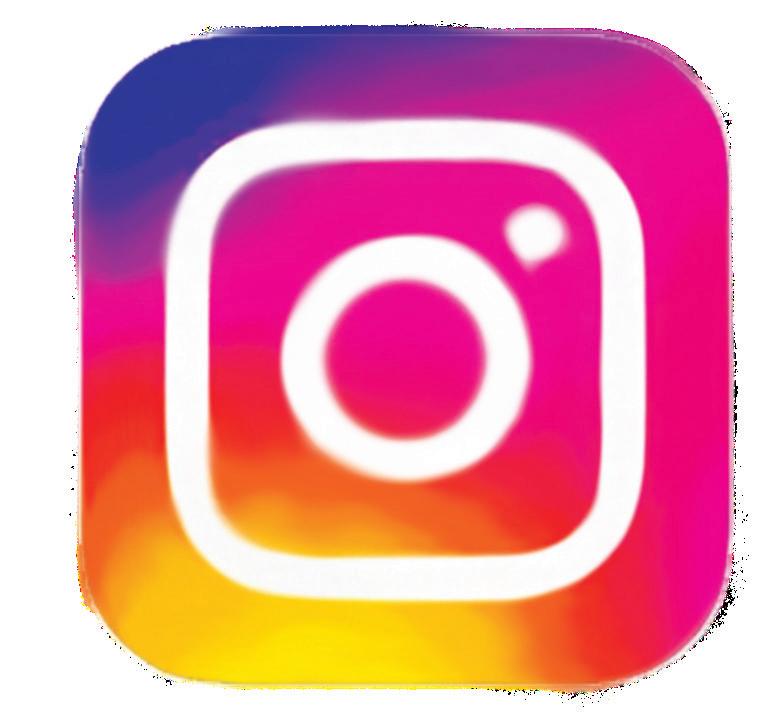
“I feel like this just looks kind of old. I didn’t use Instagram when this was the logo, so it’s just not as familiar to me,” Rizvi said. “The other one is the one I see on a regular basis. I’ve seen this much more, and this is the one that has been there when I have used Instagram.”
Despite the criticisms, simplistic logo designs are here to stay. However, as Yang explained, another trend is for brands to get more data on what consumers want in a logo to influence further redesigns.
“The most important thing for nice use of logos is that it is important to understand and implement how consumers think and how to express our brand identity with design,” Yang said.
Since the ‘60s, hallucinogenics have been portrayed as “hippie drugs” used on the fringes of society. Yet, as more and more research emerges, psychedelics could hold the key to future therapeutic treatments for behavioral and chronic conditions.
Ismail Lourido Ali, the director and counsel for policy and advocacy at the Multidisciplinary Association for Psychedelic Studies (MAPS), highlighted two main factors in the popularization of psychedelics: promising research into psychedelic mushrooms and the evolution of state and local laws.
To Ali, greater legal acceptance means “increased opportunities to communicate about psychedelics and harm reduction.”
Scientists are taking advantage of this shift in focus.
Dr. Jon Dean, a lead post-doctorate scientist at the University of California San Diego’s Psychedelics and Health Research Initiative, has worked to understand the brain’s function and response to psychedelics. Currently, Dean’s lab focuses on two main pursuits: analyzing the uses of psilocybin, a chemical contained within infamous “magic mushrooms,” for treatmentresistant depression, and an MRI brain imaging study on phantom limb pain.
The interest in researching recreational psychedelic use may be in response to trends such as a 60% increase in LSD use between 2015 and 2019, per the National Survey on Drug Use and Health (NSDUH).
Dean sees the future in startup and clinical settings, especially with “legalization itching on the horizon.”
However, he also noted that skepticism exists due to the historical stigmatization of psychedelics.
“Back (in the 1960s and 1970s), cannabis and psychedelics were sort of lumped into the anti-war movement and hippie protester movement, for good or for ill,” Dean said.
However, he was quick to dismiss this outdated perception. He held that psychedelic research has come a long way since then.
“Despite what we’ve been told for the past many decades, (psychedelics) may have some sort of clinical application, medical purpose, and benefit,” Dean said. “For the scientific community, (the idea of unproven health benefits) is helping lead the charge.”
In a Journal of Psychopharmacology study published this past December, psychiatrist Stephan Ross of New York University, and colleagues across the nation, conducted successful studies on psilocybin’s ability to relieve depression and anxiety in cancer patients.

Recently, chronic conditions have found an audience in eager researchers. In the past few months, MAPS conducted a Phase 3 trial on MDMAassisted treatment for PTSD with promising results. According to Ali, MAPS could take action in the near future.
“These results leave MAPS in a good place to apply for our new drug application with the FDA later this year,” Ali said.
Even on a federal level, there seems to be progress. After designating psilocybin as a potential “breakthrough therapy” for severe depression in 2018, the U.S. Food and Drug Administration (FDA) will review applications for its use as a drug more quickly than usual.
Ali said, “While there is a long way to go, in general, the public’s perception of psychedelics has been trending in a positive direction.”


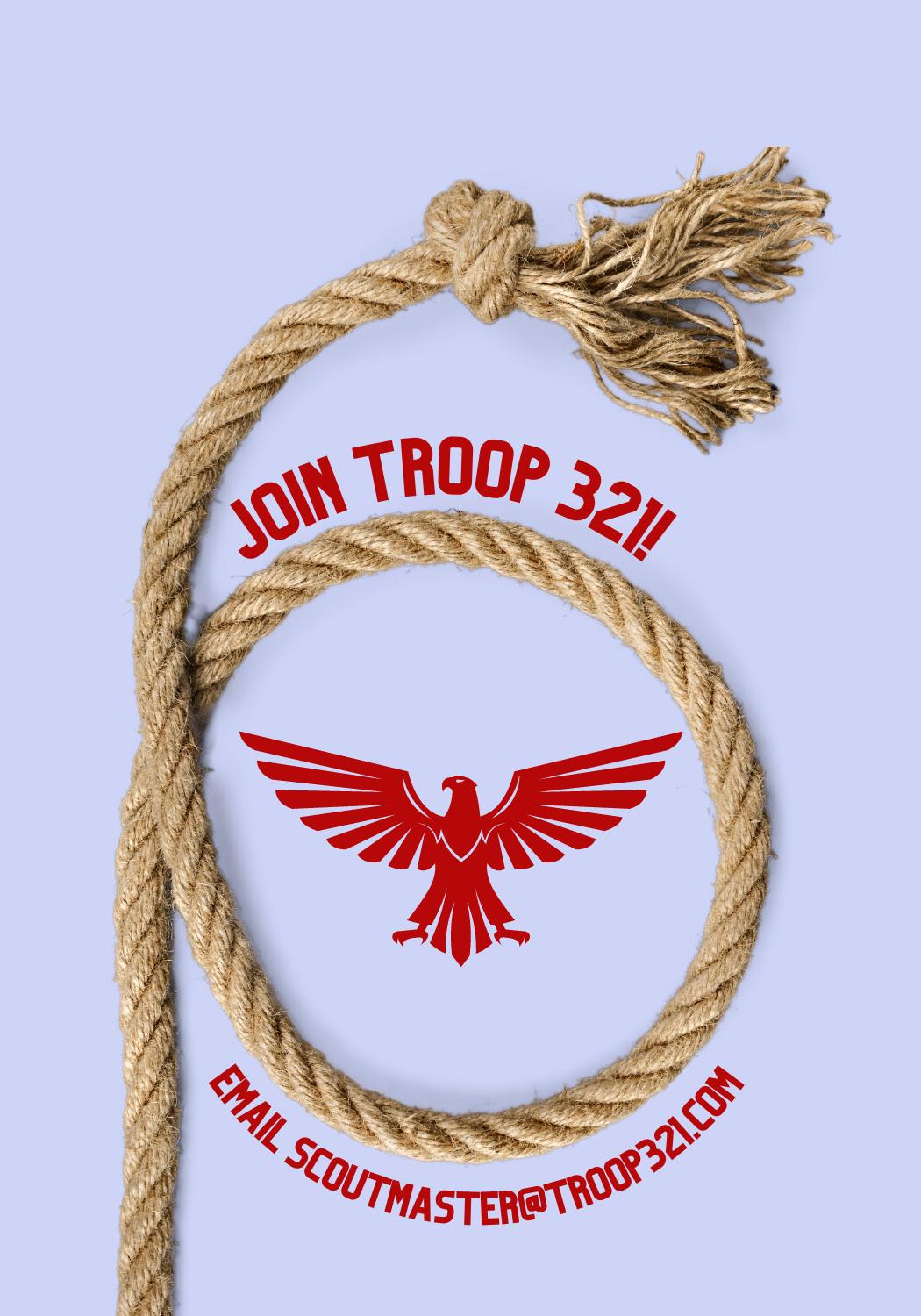

Jesse Vasquez was 14 when he first landed behind bars. He returned again. And again. And again. This time, it was for the long run.
“I was just a bit impressionable and a whole lotta reckless. It led me down that path,” Vasquez said.
Though he mentions a blissful early childhood on a farm in Fountain Valley, his family’s move to the inner city when he grew older meant exposure to a different way of life. Crime, gangs, and drugs were suddenly at the forefront.
At 17, a drive-by shooting, attempted murder, and assault with a deadly weapon found Vasquez condemned with several life sentences.
He rattles off his charges listlessly as if it’s a mantra. As if it’s happened to a completely different person. And in a way, it has.
Now, at 39, Vasquez talks about “cognitive dissonance,” the discomfort he experienced when his two modes of thought began to contradict. His morality started to find itself at odds with the constant violence of prison.
“I started developing a conscience. There was no explanation for why we felt it was appropriate to inflict violence on one of us, or in general,” Vasquez said.
Troubled, Vasquez turned to reading and writing, landing himself on the news staff of San Quentin News.
San Quentin State Prison allowed Vasquez to flourish; he credits the supportive staff and accessible opportunities as crucial to his personal development. Being promoted to editor-in-chief of their newspaper was his crowning achievement. It gave him the platform he needed to balance the warped narrative of the incarcerated, to speak on behalf of those who can’t speak for themselves.
Vasquez is quick to criticize attitudes surrounding the incarcerated system, condemning how often the trauma of being incarcerated is overlooked. Prisoners are dehumanized and demonized, not holistically understood.
“We don’t want to think about their demands. We don’t have empathy for them,” Vasquez said.
His tone isn’t angry or accusatory, merely resigned.
“I believe in incarceration - a lot of people need to go to jail. But I believe there should be a mechanism for us to restore them to society,” Vasquez said.
He talks about hope — how it’s a double-edged sword for someone with life sentences — but especially
I believe there should be a mechanism for us to restore them to society
- Jesse Vasquez
how it comes hand in hand with disappointment. Hope is not dependable, especially for those without a release date.
Instead, Vasquez wants to see tangible help.
The barriers many face are both far-reaching and insurmountable. In terms of housing, property owners and management companies often have restrictions they must follow when housing formerly incarcerated. Additionally, the income level required to get into a house is high, and employment opportunities are few and far between.
“You have to make five times the rent you're gonna pay. That's ridiculous. Nobody makes 10 grand a month coming out of jail,” Vasquez said.
A study published by the National Institute of Justice examining more than 200 employees in the Milwaukee area found that formerly incarcerated candidates were less than half as likely to receive a job offer as their non-offender counterparts despite nearly identical professional experience.

Culturally, there are shocks too.
Vasquez describes his confusion regarding gender roles, explaining he was at a loss when asked for his pronouns after coming out of prison in 2019.
“I’ve been in the system since I was a kid. We didn’t do no pronoun announcements or anything. It wasn’t like we were that woke,” Vasquez said. “I eventually got to it.”
The challenges Vasquez faced ranged far and wide. So in readapting to society, he calls for more support.
Hoping to alleviate these struggles, Vasquez proposes a roadmap for prisoners to exit the system eventually.
Paul Bocanegra, a co-founder of ReEvolution, a nonprofit dedicated to reducing incarceration and recidivism in the community, agrees.
“Our juvenile system focuses on condemning children, saying they aren’t innocent. I can assure you that many of these kids, while they’re not innocent, haven’t had the opportunity to learn anything else,” Bocanegra said.
As a mentor for transitioning community members, Bocanegra has seen firsthand the lack of support Vasquez mentions.
And he’s frustrated.
Bocanegra wants to see restorative justice programs in juvenile halls: victim impact, emotional intelligence, conflict resolution, and life skill programs, just to name a few.
“If you don’t have a support system to help you
overcome that hurdle – this is why we find so many young men and women saying, ‘I surrender. I can’t do it,’” said DeAnna Hoskins, president of JustLeadershipUSA, a national organization dedicated to driving prison policy reform.
This is a fact Vasquez knows well and seeks to change in his everyday efforts as the Friends of San Quentin News project director.
“Let’s not forget about the crimes, but let’s focus on the systemic issues that perpetuate those crimes,” Vasquez said.

The first steps of a released inmate away from prison premises should incite a feeling of utter liberation, but for the 600,000 individuals released from prisons across the United States every year, removing the metal bars does not relieve the mental toll of being detained.
Far too often, the U.S. Department of Justice overlooks the importance of mental health services for the formerly incarcerated.
The lack of post-release mental health care has detrimental effects. According to the Bureau of Justice, released inmates who struggle with mental health are more likely to re-offend than those who do not. This relapse in criminal behavior is called recidivism.

Whenever someone repeats a crime after being released from prison, there is a cost to both the individual and society.
Denying someone the means to successfully reintegrate into society after they have served their time is unjust, and the current lack of mental health services perpetuates this injustice.
It is simply immoral to deny someone the possibility of successful reintegration into society when they have already done their time, but the current lack of mental health services does just that, but the current lack of mental health services does just that.
Furthermore, recidivating offenders account for a large portion of the country’s increasing expenditures on law enforcement, which perpetuates a cycle of imprisonment and spending.
The first step to reducing recidivism is a raised standard of mental health
Gabrielle Shorecare. The U.S. Department of Justice needs to ensure that all released inmates have access to mental health services to promote successful reintegration – a course of action supported by countless studies.
One study published in 2022 in the Journal of Community Psychology found that released inmates who received mental health services were 26% to 38% less likely to recidivate.
Much of the hesitation to take this step is attributed to insufficient funding, but according to the U.S. Prison Policy Initiative, the Justice Department has the funds to detain over two million people at any given moment.
Somehow, the same department cannot seem to provide the necessary mental health supports to ensure that the formerly incarcerated can successfully reintegrate into society without a high risk of recidivism.
It is important to note that some effort has been made to provide mental health services to released inmates. Some states, like California, have coordinated services to prioritize mental health for the formerly incarcerated, according to the Department of Corrections and Rehabilitation. This type of effort gives released inmates a real second chance.
We can all identify an instance when we were given a second chance. A common misconception is that release from prison is, in itself, a second chance, but the reality is more complicated.
A real second chance is one that equips the formerly incarcerated with the necessary resources to successfully reintegrate, and it starts with a raised standard of mental health care.
TikTok is one of the world's most widely used social media platforms, but it has failed to create an inclusive community.
According to a study by Laurus College, TikTok has over one billion active users and is the fastest-growing app in history.

Alongside its wide variety of content creators, audios, and its trademark “for you page,” where viewers get a constant stream of content catered to their interests, TikTok also sports a large assortment of filters to use when filming videos.
These range from filters that apply makeup to the subject’s face, have a green screen that allows the user to share photos and videos directly from their camera roll, and even interactive “this or that” ones. However, hidden amongst these thousands of options, are filters such as those titled “Maple 2” and “Soft White.”
Upon first glance, these are no different from the rest of the “beautifying” filters; they aim to make the user’s skin look “prettier.”
At a closer look, however, it is apparent that the method in which they do so is unacceptable. They lighten the user’s skin color, leaving users to question the accuracy of TikTok’s “commitment to diversity and inclusion.”
In addition, there’s an aspect to these filters that goes beyond ethics and is rooted in society from centuries ago.
According to the National Conference for Community and Justice, the beauty standard of today is fair skin, which, along with countless societal and economic issues, has psychological problems as well.
The idea that lighter skin is better looking than darker skin originated in the colonial period when western colonizers created a white supremacist ideology to justify slavery. As a result, whiteness became identified with everything civilized, virtuous, and beautiful.
This ideology has become a deeply
rooted belief amongst colonized societies such as India and many African countries, which often associate light skin with a higher social standing. A recent study by the University of Cape Town shows that one in three women in South Africa bleach their skin, with most saying they use skin lighteners because they want "white skin."
According to Arizona University, this ideology is particularly damaging amongst young women, as they feel their physical appearance is constantly under scrutiny from society’s definition of beauty. Such thinking leads to insecurities, which can later develop into mental health issues. These societal pressures are only heightened by seemingly insignificant things such as filters on an app.

Not only is it mentally draining for anyone to constantly feel like theyhave to change themselves to be accepted by society, but it also shows how much work is still left to be done.
Removing filters such as those that lighten skin color is just the first step towards a truly inclusive world. They have no place in a progressive society with the end goal of acceptance and equality.



When Ryan Murphy attempted to contact the families of Jeffrey Dahmer’s victims, he got no responses.
The families wanted to leave the tragedies that befell their loved ones in the past.
Despite the lack of responses, Murphy decided to continue production on his show “Monster: The Jeffrey Dahmer Story,” which went on to become one of Netflix’s most successful shows ever. Murphy and Netflix were able to capture the zeitgeist with their show, but some speculate they did it by exploiting the trauma that real families went through.
Our fascination with serial killers is not new. Serial killers have been around in America since H.H. Holmes in 1861.
According to investigative historian Peter Vronsky, the peak of serial killer activity happened between 1970 and 1999, with killers such as Ted Bundy and Jeffrey Dahmer capturing the morbid fascination of the American public.
Our curiosity surrounding true crime may seem in poor taste but is ultimately natural. In the words of the true-crime YouTuber Wendigoon, “It’s interesting to poke your head into the rabbit hole and see how awful it gets.”
This interest was so powerful that it drove “Monster: The Jeffrey Dahmer Story” to become the third Netflix series with 1 billion viewing hours according to a report from Collider and has caused the emergence of almost 200 different true crime podcasts according to the University of South Carolina.
A survey from Morning Delight found that 62% of Americans enjoyed movies and shows about serial killers. However, this curiosity becomes harmful when it
begins to glorify the killer and hurt the victims of the families.
Podcasts like “My Favorite Murder” desensitize audiences toward real violence, adding a comedic tone to tragedies. There is no punchline that can cover the pain of victims, and the use of real deaths as a form of entertainment is morally questionable at best and disgusting at worst. The in-depth descriptions of some murders can also be disturbing.
One of the most famous true crime stories is that of Junko Furuta, who was a Japanese teenager when she was assaulted and killed by four teenage boys. True crime creators often go into great detail when describing the suffering of Furuta, highlighting every gruesome aspect of her captivity. Even if one may have an interest in true crime, using Furuta’s story in order to gain fame is exploitation.
This is to say that fixating on the victims is the wrong way to cover serial killers. When creating true crime media, the focus should be placed on the depravity of the killer themself rather than the pain the innocent victims were put through.
Despite that, true crime media can still be exploitative without graphic depictions of the crime. “Monster: The Jeffrey Dahmer Story,” often shows restraint in its depiction of violence. None of Dahmer’s murders are shown on screen and are at most only implied through sound design. While there is gore, it is often subtly infused into the
story. In fact, the only murder shown on screen is Jeffrey Dahmer’s own death, a scene of cathartic retribution where the audience can revel in the death of the show’s real monster.
This goes to show how the series is still exploitative, as the creators of the show ignored the criticism they faced from the real families of Dahmer’s victims when making the show. Some victims’ family members were even portrayed in the show, with Rita Isabell specifically having her traumatic outburst recreated in the show.

Even if Ryan Murphy wanted to be tasteful when making the show, causing the families of the victims to relive their trauma should have been reason enough not to make the show.


While there are issues with the genre currently, the solution is not to eradicate true crime media entirely. Doing so would be in vain because, as previously seen, our interest in how depraved humans can be will never go away. True crime can exist and should disturb its audience.
In addition, true crime media should place more emphasis on the depravity of the killers themselves, and less on the gory details of their crimes. More importantly, true crime shows and movies should not be made without the express consent of the victims’ families.
We have seen enough media coverage of horrible men like Jeffrey Dahmer and Ted Bundy and it is time we let the victims finally rest.
Nearly three weeks ago, seven people died 11 miles from Carlmont High School.
The Half Moon Bay mass shooting on Jan. 23 was a horrific but not uncommon product of gun violence. Gun-related deaths in California have spanned “Eight days, 25 dead,” as The Guardian quantified in a recent headline. Our golden state will forever be tinted a crimson hue by the loss of life this past month.
Some grieve. Others face a stifling paralysis. Many are quick to politicize death; in a time of such tragedy, we find ourselves more divided than ever.
It seems as though we’ve forgotten how to feel. Wounds from injustice and illness scar our society — the figurative skin might heal, but we stitch ourselves up with desensitization to protect from future trauma. Maybe this is a futile attempt to explain away our cynical reactions to the news; people are no longer surprised when abysmal headlines flash across screens.
The worse it gets, the less we can stand to care. The closer it gets, the more afraid we become. Even in this state of fear, there is a recognizable rejection of a violent stereotype: as the gun violence epidemic spreads, the demographics of perpetrators are expanding.
We’d gotten comfortable with the common narrative: a young white man who slipped through the cracks of the education system, the undiagnosed mental illness, the easy access to firearms, but what about the 6-yearold who shot his teacher in Virginia? Or the Chinese farm worker, forced to live in inhumane conditions? Wherever there is a gun, there is a threat.
We should be safe here. Giffords Law Center to Prevent Gun Violence analyzed California’s firearm legislation in 2022 and deemed it the state with the “strongest gun laws.” Clearly, this is not enough — people are still dying. The battle to save lives cannot be fought with legislation alone.
Yes, guns kill people, and people pull the trigger. While it sounds easier to rid our society of weapons
instead of hatred, ending gun violence will take a radical removal of both. How do we go about doing this? None of us are entirely sure.
These musings are not intended to discredit the admirable work being done to rid our community of gun-related deaths. Strides are being taken to a better future, but we still have a long way to go.
Maybe together, we will come closer to finding a solution.
If there are any thoughts you would like to share, please scan the QR code below to fill out a guest opinion form.

On behalf of The Highlander editorial staff and the Carlmont Journalism program, we encourage you to utilize the resources below if you are interested in learning more about gun violence prevention or need mental health services during this time.
Students Demand Action: https://studentsdemandaction.org/
Mills-Peninsula Behavioral Health, Mental Health, and Substance Abuse: (650) 696-4005
National Mental Health Hotline: (866) 903-3787


he Myers–Briggs Type Indicator (MBTI) is a tool to understand one’s psychological preferences. To navigate this map, pick the letter you associate yourself with the most from each question mark box: the final four letters will be the resulting MBTI personality type, with the associated category and definition at the bottom.
1
I: Are you an introvert? Do you prefer to direct your energy inwardly—to ideas, information, and beliefs?

E: Are you an extrovert? Do you prefer to direct your energy outwards—to people, things, and situations? Do you recharge your energy most when you’re with others?
You are...
An analyst:
2

N: Are you intuitive? Do you prefer to deal with ideas, abstract concepts, and theories?
S: Are you sensing? Do you prefer to deal with facts, details, and concrete information? Do you prefer to use your senses to receive information?

3
F: Are you more feeling? Do you make judgments and decisions based on tastes and feelings?
T: Are you thoughtful?more Do you make judgments and decisions based on criterialogic-basedregardless of feelings?
A diplomat:
4
P: Are you perceiving?more Do you feel more structured and organized on the inside?
J: Are you judgmental?moreDo you feel spontaneousmoreand adaptable on the inside?
INTJ, INTP, ENTJ, ENTP Analysts are intuitive and thinking personality types; they have a strong ability to rationalize and innovate.
A sentinel:
ISTJ, ISFJ, ESTJ, ESFJ Sentinels are sensing and judgmental personality types; they are careful, consistent, and selfmotivated, rarely needing external inspiration to be productive.
INFJ, INFP, ENFP, ENFJ Diplomats are intuitive and feeling personality types; they kind-hearted and open to others. Usually, they prefer working collaboratively rather than competing with their peers.
An explorer : ISTP, ISFP, ESTP, ESFP Explorers are intuitive and perceiving personality types; they are exciting, energetic, and bold. They are the life of the party but can make decisions too quickly.


Looking for a new outfit to spice up your wardrobe? Check out these eight casual winter outfits below. The following outfits can be found through online shopping platforms, are great opportunities to step out of your comfort zone, and can help you find your sense of style!


New Clothing Back In Brands Stories Kids Sale Gifts










